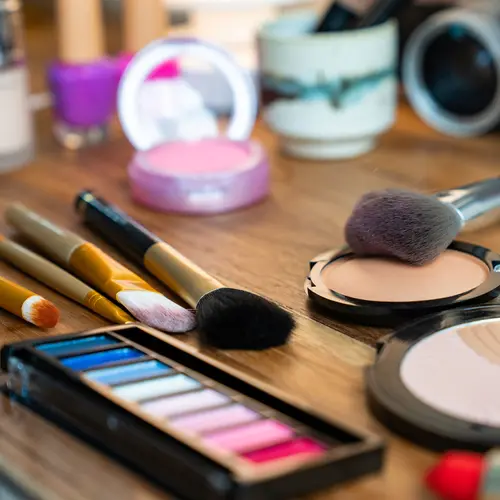Faster and lighter are the qualities many of us look for in a car, a laptop, and our bodies when we're running a marathon. They're also the prized attributes of skin care serums -- light, fast-absorbing liquids used as an alternative or in addition to creams or lotions.
The biggest difference between a serum and a cream or lotion is what the formulation doesn't include. Serums leave out occlusive, or airtight, moisturizing ingredients such as petrolatum or mineral oil that keep water from evaporating. They also contain fewer lubricating and thickening agents, like nut or seed oils. Most serums are water-based, eliminating oils altogether.
Serums are a top pick of many skin care pros, including Ni'Kita Wilson, a cosmetic chemist and vice president of research and innovation at Englewood Lab. Wilson chooses a serum instead of a cream for her own at-home regimen: "It works better for my oily skin, and it has every ingredient I need."
Esthetician Veronica Barton-Schwartz, owner of Veronica Skin and Body Care Center in Malibu, Calif., who counts celebrities Olivia Newton-John, Suzanne Somers, and Cher among her clients, is also a fan. "I think everyone is doing their skin a disservice if they don't have a great serum."
"The beauty of a serum is that most of the fluid is eliminated," Wilson says, "so what you're left with is a high concentration of active ingredients." Serums contain the most potent dose of anti-aging ingredients -- antioxidants, peptides, and skin brighteners such as kojic acid -- you can find in nonprescription products. "They're the true workhorses of any product line," Wilson says.
Serum Costs, Serum Benefits
Because active ingredients are more expensive than thickeners, serums are also the costliest product in many skin care lines. But when applied properly, a 1-ounce container of serum should last months. Many brands come in pump bottles or have medicine-dropper applicators to dispense just the tiny amount you need.
Those few concentrated drops are super-efficient. Serums are made of very small molecules, so the skin absorbs them quickly and deeply. "The thicker, heavier ingredients in creams form a barrier on your skin," Wilson says. "That's great for locking moisture in. But it can also lock active ingredients out. Without these hindrances, the active ingredients in a serum penetrate your skin faster and more effectively."
Jessica Wu, MD, a Santa Monica, Calif., dermatologist, and author of Feed Your Face: Younger, Smoother Skin and a Beautiful Body in 28 Delicious Days, recommends serums to many of her patients. "They're great for people with oily skin," she says, "or those who prefer a weightless feel to their skin care products. Serums have a non-greasy finish and they don't leave behind a sticky residue."
Still, serums aren't for everyone. Wu says the liquid or gel-like texture of a serum can be a poor match for people with chronic skin conditions like eczema or rosacea, which weaken the skin barrier. For these people, serums may penetrate too quickly, causing irritation.
Others need the hydration that a rich day or night cream provides. "If you have mature or dry skin, you can't get away with using just a serum," says Wilson. Instead, she recommends a serum as an add-on to your skin care regimen, layered under your moisturizer. "There's a lot of benefit to serums, from smoothing fine lines to reducing age spots, that you can't reproduce in any other formulation," she says.
How to Apply Serums
Adding a serum to your daily beauty routine? Here's how to apply these lightweight elixirs for maximum effect.
1. After cleansing your face, apply a pea-sized amount of serum, patting it evenly over skin with your finger.
2. If you have sensitive skin, wait 10 to 15 minutes after washing your face before using serum. "When your skin is damp, applying a water-based product is more likely to lead to irritation," says dermatologist Wu. "Allowing your skin to dry completely slows down penetration."
3. You don't need to skip the moisturizer you love. Just pat on your serum first, so it isn't blocked from penetrating your skin.
4. Is your serum too pricey for twice-a-day use? Borrow this trick from cosmetic chemist Wilson. Use the serum as a booster either a.m. or p.m., adding a couple of drops to your moisturizer.
Find more articles, browse back issues, and read the current issue of "WebMD Magazine."

